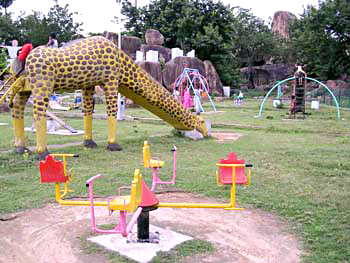 Dubrajpur is a small town in the Birbhum district of West Bengal. It is located in the south west part of the district. The famous town of Shantiniketan is 40 km west of Dubrajpur. The nearest railway station is the Dubrajpur Railway Station. The nearest airport is at Kolkata. It is located between 23.8° North latitude and 87.38° East longitude at a height of 77 metres ( 252 metres) above mean sea level. It is located on NH 60.
Dubrajpur is a small town in the Birbhum district of West Bengal. It is located in the south west part of the district. The famous town of Shantiniketan is 40 km west of Dubrajpur. The nearest railway station is the Dubrajpur Railway Station. The nearest airport is at Kolkata. It is located between 23.8° North latitude and 87.38° East longitude at a height of 77 metres ( 252 metres) above mean sea level. It is located on NH 60.
Shantiniketan, Phareswar Temple, Tarapith, Jaydev Kenduli - famous for the Jaydev mela, Labhpur - birth place of Tara Shankhar Bandopadhyay, and Kankalitala. Bakreswar, a small temple town, located just 14 km from Dubrajpur are the nearest attractions in the vicinity.
According to the 2001 census report, Dubrajpur had a population of 37,752 inhabitants. Males constitute 52% of the population while females constitute 48% of the population. In Dubrajpur, 14% of the population is less than six years of age. Dubrajpur has an average literacy rate of 56%, which is lower than the national average literacy rate of 59.5%. The male literacy rate is 65% and, the female literacy rate is 46%.
More on West Bengal
| Tribes of West Bengal | Bengali Theatre | Temples of West Bengal | Colleges of West Bengal |
| Tribal jewellery of West Bengal | Bengali Language | Districts of West Bengal | Medical colleges of West Bengal |
| Airports in West Bengal | Crafts of West Bengal | Cities of West Bengal | West Bengal Cricketers |
| Monuments of West Bengal | Bengali Wedding | Personalities of West Bengal | Bengali Literature |
| Folk Dances of West Bengal | Bengali Folktale | Museums of West Bengal | Bengali Newspapers |
| Festivals of West Bengal | Bengali Cinema | Universities of West Bengal | Places to See in West Bengal |



















